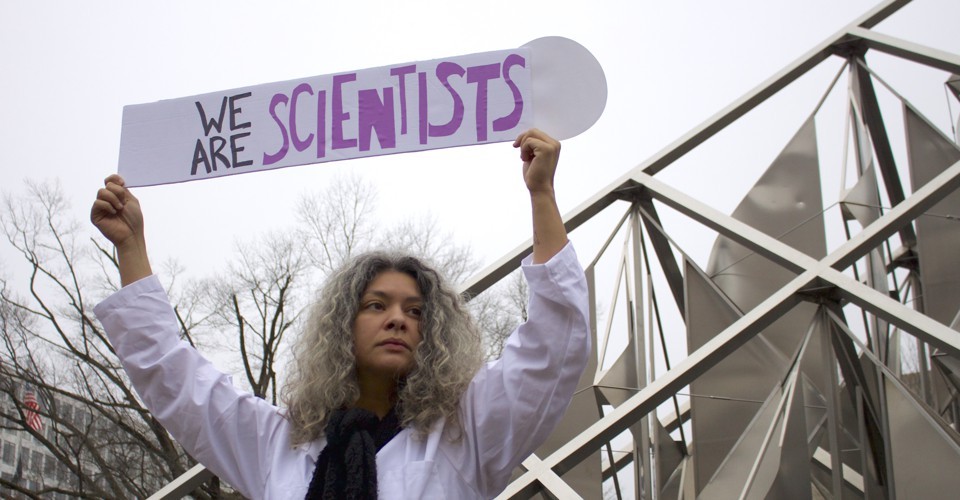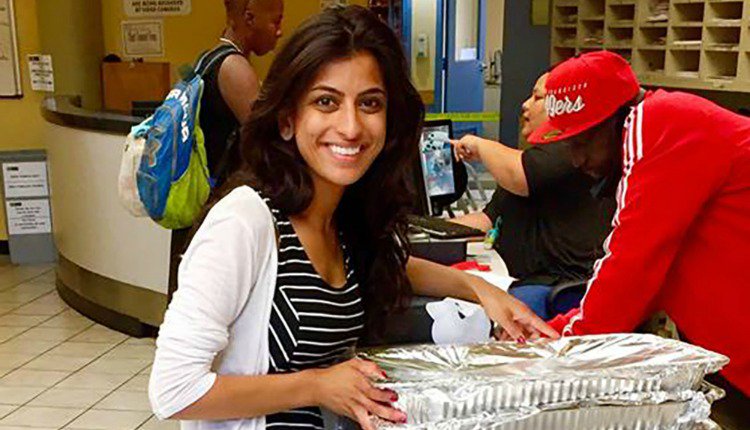A Day With the Women Scientists Protesting Trump
theatlantic.com - “I’m so anti-protest, and so anti-demonstration,” she told me. “Growing up in the U.S.S.R., I always have that sense that protest is theater.” Even after she moved to the United States, she retained her suspicion of demonstrations large and small. They seemed to rarely achieve their goals, and they reminded her of the government-planned pageantry of her youth. As a graduate student at the University of Colorado Boulder, she attended a protest during the run-up to the Iraq War—only to leave before it ended out of personal unease. Since then, her research into community ecology has taken her to the tropical rainforests of Costa Rica and the high-elevation deserts of Utah. It let her spend months studying leafcutter ants, a colony-dwelling creature that grows fungus for its food; and it introduced her to Pseudobombax septenatum, a tree sheathed in photosynthetic bark that can store water in its trunk for months at a time. But her life as a scientist didn’t bring her to a mass protest until January 21, 2017, when she joined roughly 50 other female scientists—and hundreds of thousands of demonstrators—at the Women’s March on Washington. She marched as part of 500 Women Scientists, a new advocacy group for science and scientists that she and several of her friends established in the weeks after the election. Most of the women walked in white lab coats, on which they had written with Sharpie the names of their heroes, mentors, and friends who could not attend. They chanted “What do we want? Data! When do we want it? Forever!” and “When I say peer, you say review! Peer! Review! Peer! Review!” Someone held a sign saying, “MAR-A-LAGO (Trump’s Resort) WILL BE UNDER WATER BY 2045.” At the bottom, in tiny text, it cited a report from Coastal Risk Consulting, a private firm that uses climate data to project future sea-level rise. They marched together, but it was the first time many of the members had met each other in person. 500 Women Scientists first attracted attention in late November after its post-election pledge garnered more than more than 10,000 signatures in a week. Since then, its members have sat on panels together and plotted the group’s next steps. But many did not actually gather together until Saturday, when women scientists associated with the group marched in Denver, Seattle, Los Angeles, and D.C.
This Woman Created an App to End Hunger in America
MAKERS brings us this story of Komal Ahmad, who was astounded by the dichotomy between those who go hungry and the excess food businesses throw out every day. She founded Copia as a way to make it easier for companies to share extra food. The app "technology enables businesses to receive a tax write-off and a reduction in disposal costs for providing meals to communities in need," according to the company's website.Click through to read more.
makers.com - "It shouldn't be this hard to do the right thing."
That's what Komal Ahmad said after offering to buy lunch for a homeless veteran while she was an undergraduate at University of California Berkeley. The encounter allowed her to compare two stark realities: just across the street the university was throwing away thousands of pounds of food while the veteran sitting across from her was having his first meal in three days.
What became a mission to feed the hungry with the university’s leftovers blossomed into an app to end hunger in America.
Today, Ahmad is the founder and CEO of Copia, an app that she describes as "an Uber for food-recovery," matching non-profits serving veterans, children, women, and those in need to companies with leftover gourmet food. This past Super Bowl weekend, Copia organized numerous pickups of food throughout the San Francisco Bay Area that ended up feeding more than 41,000 people.
"It is the sexiest thing that you could solve instantly," she said in an interview later adding, "We use technology to optimize every other portion of our life, why can't we use it to optimize the most unnecessary problem of our time?"
Read more here.




